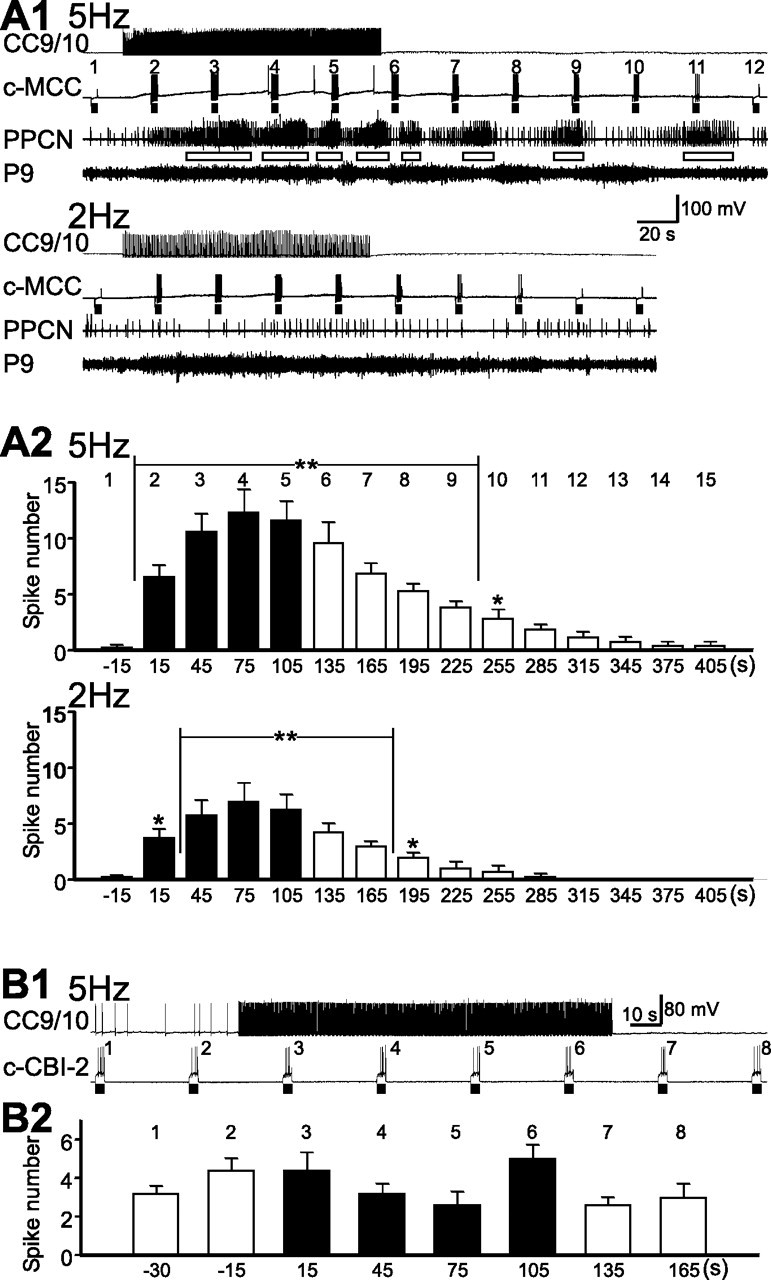Figure 7.

CC9/10 enhances MCC excitability but has little effect on CBI-2 excitability. A1, Stimulation of CC9/10 (5 Hz, top) enhanced MCC excitability, and induced locomotor activity (open bars) in PPCN. Lower frequency stimulation of CC9/10 (2 Hz, bottom) no longer induced locomotor activity, but still enhanced MCC excitability. MCC excitability was tested with 3 s current pulses (bars) applied every 30 s, and the numbers above the c-MCC denote test number. A2, Group data showing the effects of CC9/10 on MCC excitability (measured by counting the number of MCC spikes evoked by 3 s current pulses) when CC9/10 was stimulated at 5 Hz (F(15,90) = 26.44, p < 0.0001, n = 7) and 2 Hz (F(10,30) = 11.61, p < 0.0001, n = 4). Numbers on the top of the graph correspond to the test numbers shown at part A1. Post hoc tests [the number of MCC spikes at each test is compared with the number of spikes at test 1 (−15 s)] with Dunnett corrections are as follows: *p < 0.05; **p < 0.01. B1, Effects of stimulation of CC9/10 at 5 Hz on the excitability of CBI-2. B2, Group data showing that 5 Hz CC9/10 stimulation had no significant effect on the excitability of CBI-2 (F(7,32) = 2.10, p > 0.05, n = 5). Numbers on the top of the graph correspond to the test numbers shown at part B1. Black bars in bar graphs are data obtained during stimulation of CC9/10. Error bars indicate SEM.
